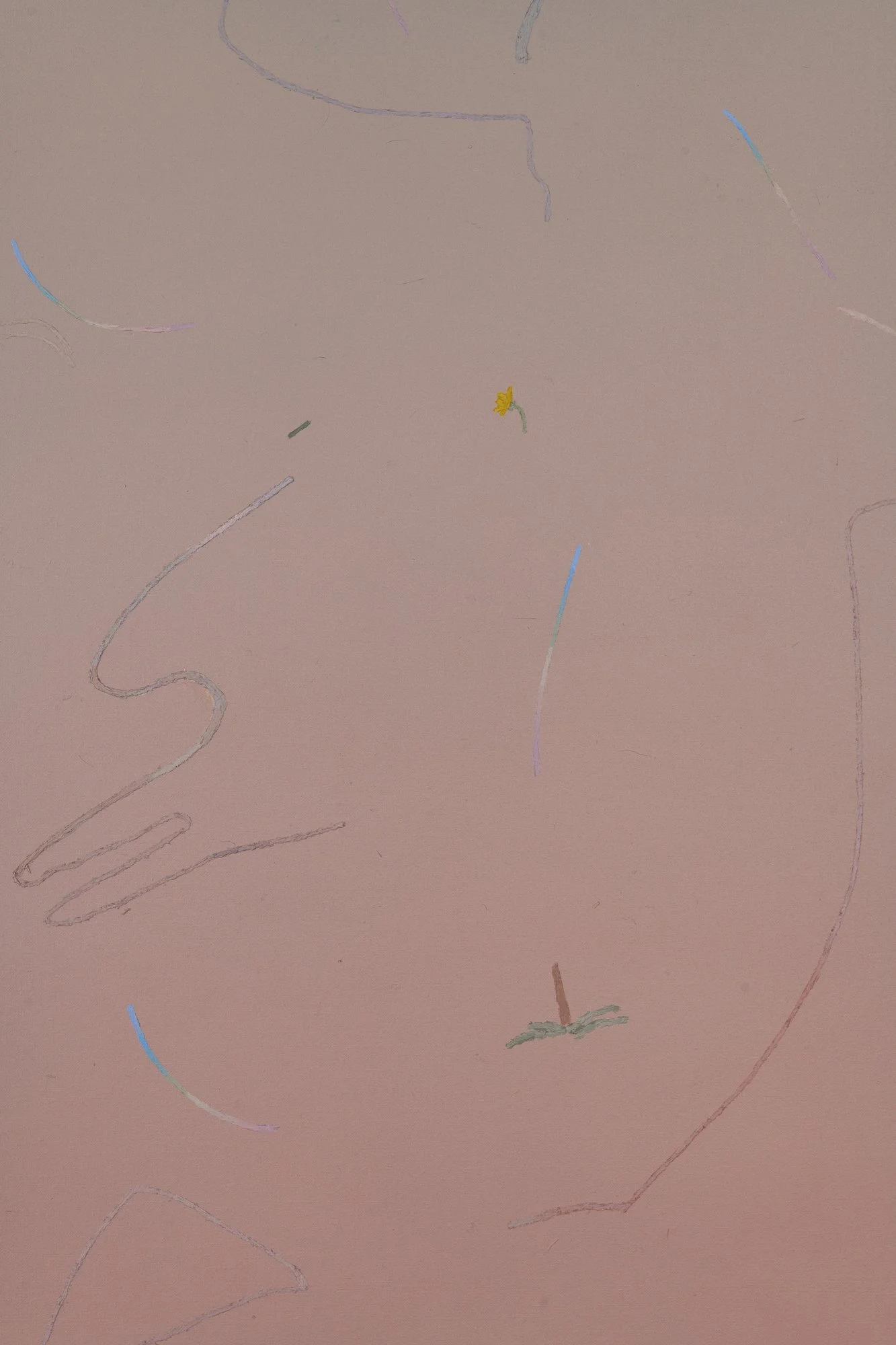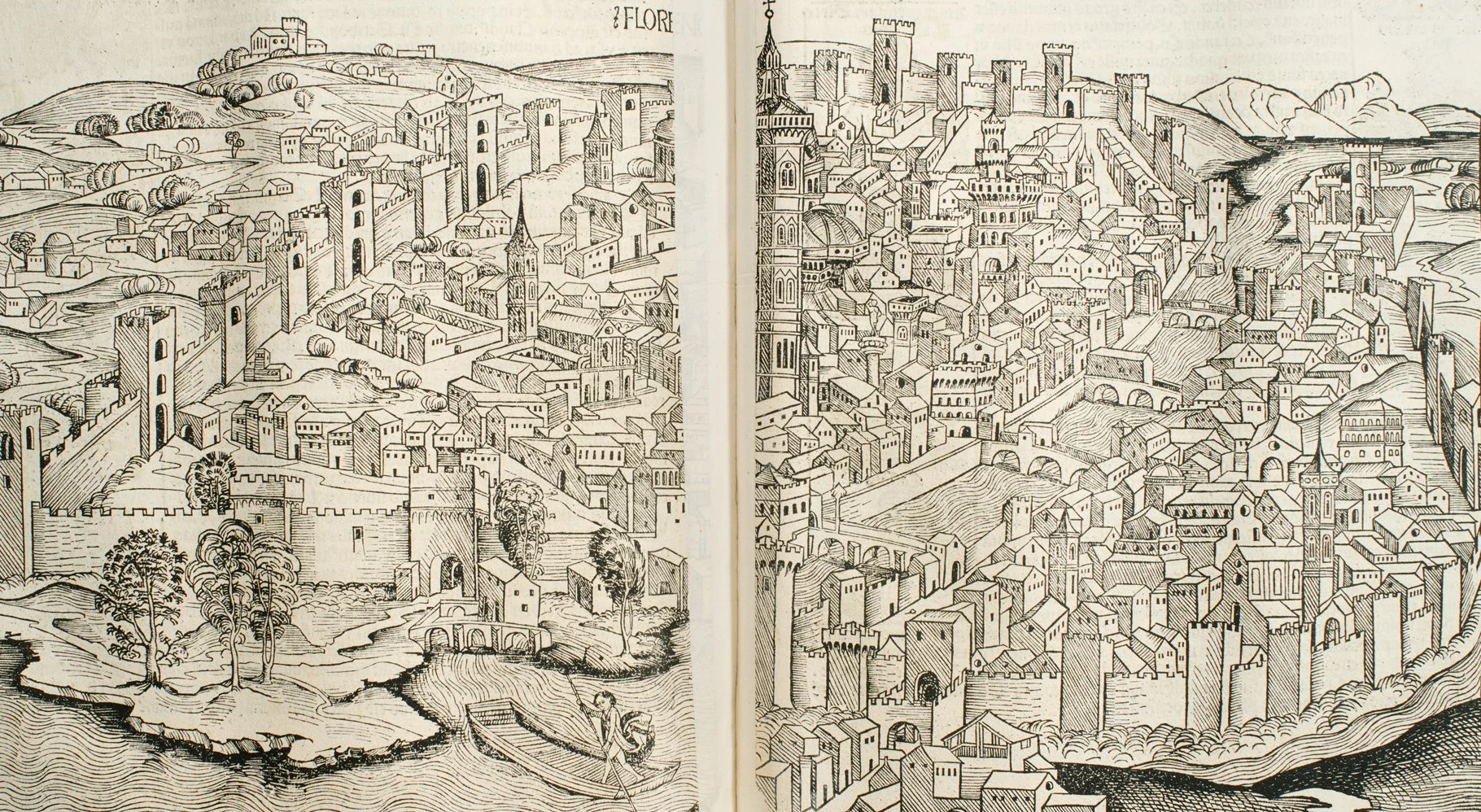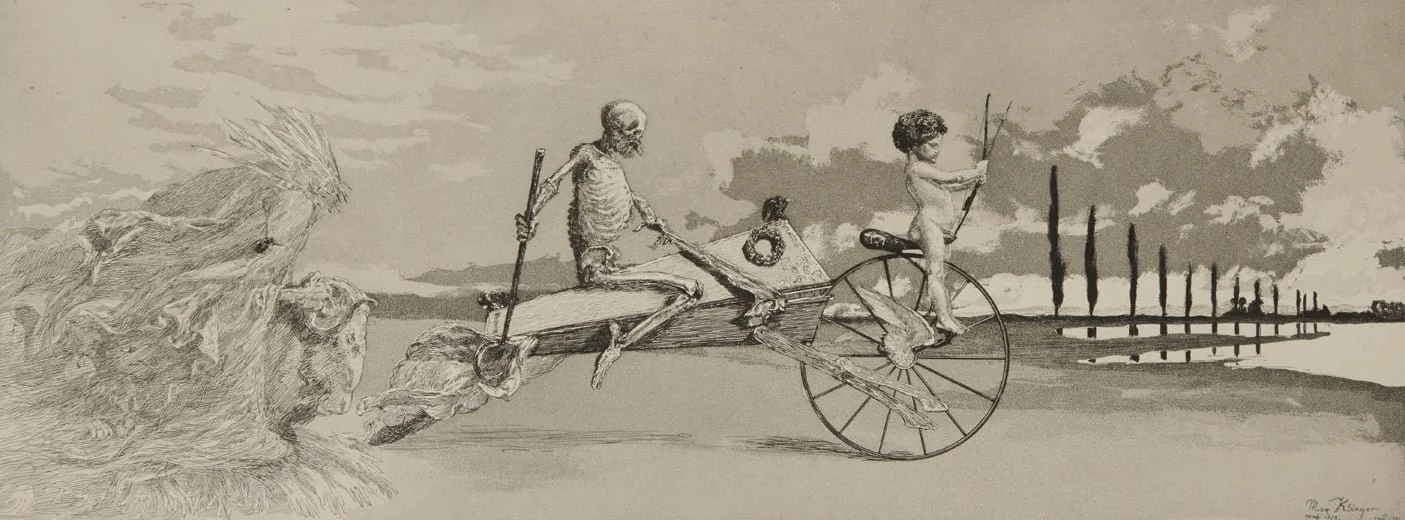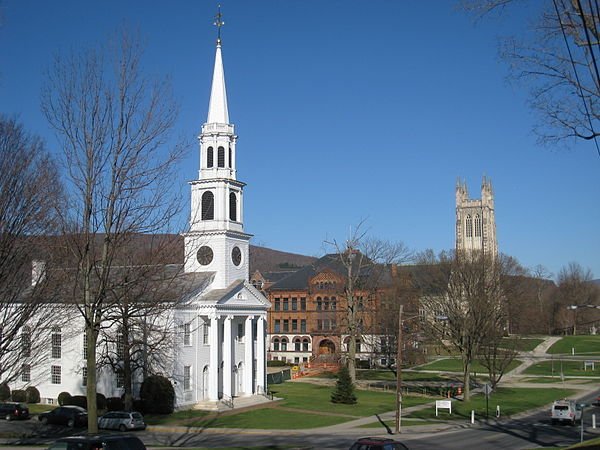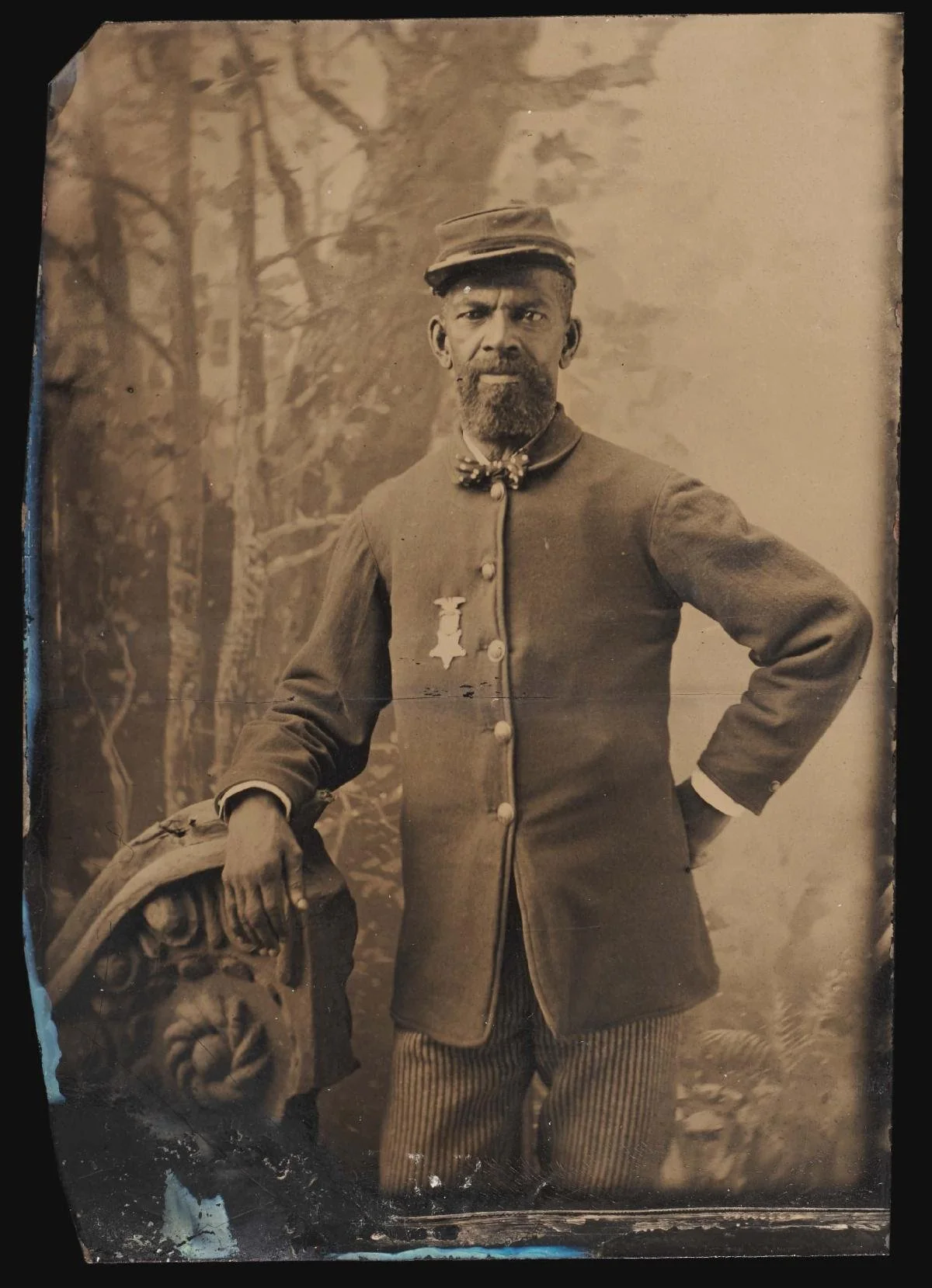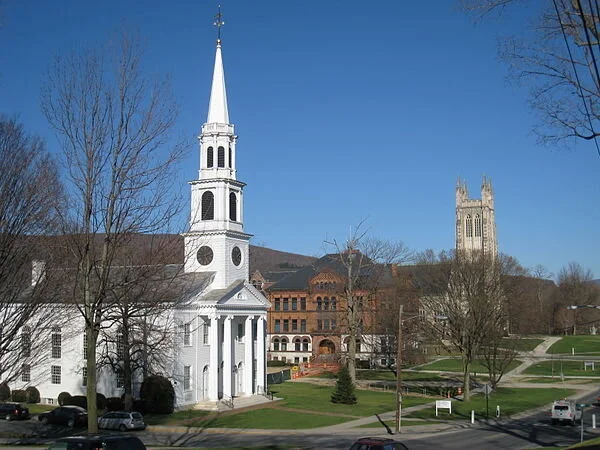
‘Games of remembering’
“Goose, Fruit, Awning, Arm” (detail) (oil, marble dust and wax on linen over panel), by Mariel Capanna, in her show “Giornata,’’ at the Clark Art Institute, Williamstown, Mass., through Jan. 25.
— Courtesy of the artist and Adams and Ollman
— Photo by Constance Mensh
The museum says:
“Mariel Capanna (b. 1988, Philadelphia, where she lives and works) plays what she calls ‘games of remembering’ as a way of reckoning with loss. Working from home videos and family slideshows, whose runtime is her constraint, the artist races to record fleeting memory images in oil paint. She scatters these flat, pastel forms like confetti across deep, atmospheric surfaces, creating compositions that are at once jubilant and wistful.’’
Display it and let it degrade
“Gathering My Thoughts” (Ohio-grown willow), by Laura Ellen Bacon, at the Clark Art Institute, Williamstown, Mass., through Oct. 12, 2026.
— Photo by Derek Hansen
The museum says:
Ms. Bacon “weaves her sculptures from slender strands of willow. Gradually, twist by twist, she builds an enormous form with a complex interior structure. The technique is entirely original to her, but has affinities with such rural English crafts as fences, baskets, and thatching, as well as the nests and burrows of birds and other animals. Bacon has conceived her work for the Clark as a record of its own making: each of the overlapping volumes represents one day of her skilled labor. Together, they accumulate into an organic shape, like an outgrowth of the woodland floor. She enjoys the fact that the sculpture may become a habitat for insects and other creatures. Because it is made entirely from natural materials, it will be disassembled and allowed to degrade into the forest floor.’’
Adapt, adapt!
Adapted from Robert Whitcomb’s “Digital Diary,’’ in GoLocal24.com
I was driving through the snowless Berkshires the other week and saw a sad sign at a motel that catered to customers of nearby ski areas: “Think Snow.”
The low-slung Clark Art Institute
I was on my way, after meeting with a charity board colleague in the lively town of Great Barrington, to see the vast, exciting and low-slung Clark Art Institute, in Williamstown. It’s a museum mostly exhibiting European and American art, from the 14th Century on, created by Robert Sterling Clark (1877-1956) and his wife, Francine Clark (1876-1960). Mr. Clark was an heir to the Singer Sewing Machine Co. fortune.
The museum is in the very small academic town (Williams College) because the Clarks thought that its remoteness would prevent it from being destroyed in a Soviet nuclear attack! The number of cultural institutions in The Berkshires is astonishing – museums, theaters, musical venues, colleges, etc.
The region’s by turns bucolic and harsh beauty has drawn many famous visual artists and writers. One of the latter was Herman Melville (1819-1891), who saw the shape of a whale as he gazed at Mt. Greylock from Pittsfield while writing Moby-Dick, in 1850.
One of the strengths/quirks of America, and maybe a reminder that we have the West’s greatest income inequality, is how creators or inheritors of great wealth fund nonprofit institutions in a much wider range of places than you see in other Western countries – even in virtually the middle of nowhere.
Salisbury (Mass.) Beach
— Photo by John Phelan
Back to climate. Mother Nature has the final say. People with houses (mostly summer places. I think) along the beach in Salisbury, Mass., had passed the hat to spend $600,000 to rebuild sand dunes in front of the properties. Three days after the project was completed earlier this month, a storm washed away much of the dunes. And now the owners want the state’s taxpayers to help pay for restoration.
But many taxpayers are getting fed up with taking care of usually affluent people who insist on having houses virtually on the water. As I’ve written here before, it’s past time to sound the bugle to retreat inland. It’s worth noting that long before our era of global warming and rising seas, few people in New England towns lived right along the water. They built houses around town greens and on farms well above the highest storm tides.
Adapt, adapt! As warming winters cut in maple-sap collections, researchers are looking into getting much increased sap for syrup from such trees as birch and beech that are less affected by global warming. They aren’t as rich a source of syrup as maples, but they hold some promise at filling some of the gap. Hit this link from New Hampshire.
Southern New Englanders will also be growing more fruit trees that have typically been grown further south, such as peaches and heat-tolerant apple varieties. Hit this link.
Still, there’s the natural variability of weather as opposed to the march of climate. We’ll still have stretches in which the weather will be cooler than “average” (though “average” keeps changing), such as the weather forecast for this week.
I think of this quote (which I often drag out at this time of year) from Ernest Hemingway’s A Moveable Feast, his memoir of being a young man in Paris in the ‘20s:
“When the cold rains kept on and killed the spring, it was as though a young person had died for no reason. In those days, though, the spring always came finally but it was frightening that it had nearly failed.’’
Then it’s April in Paris and chestnut trees in blossom…
Putting cities on paper
“View of Florence from Liber chronicarum (Nuremberg Chronicle)’’, by Hartmann Schedel (German, 1440-1514)), in the “Paper Cities” show at the Clark Art Institute, Williamstown, Mass., through June 23. The Clark Is an astonishingly big museum for a place as small as Williamstown. It was built there, among other reasons, because of the hope that it would be far away from a nuclear bomb explosion in World War III.
The museum explains:
“In the sixteenth century, a vast consumer market emerged (largely in Europe) for images of cities, spurred by developments in print technology and new global exploration. Inquisitive consumers and armchair travelers were able to engage with distant places through travel books and world chronicles that offered information akin to traveling the world firsthand. Artists frequently copied maps, which often circulated widely as single-sheet prints, providing viewers with highly detailed visual information about places both near and far.
“As public fascination with cities continued to grow, so did the interest of artists in depicting them. Comprising prints and photographs spanning almost five centuries, this exhibition examines representations of a variety of U.S. and Western European cities to explore differing artists’ approaches. Some artists endeavored to offer objective records of a city’s defining monuments and topography. Others also attempted to capture a city’s character by including details such as figures or sites that represent larger socio-cultural ideas. Often, artists’ own relationships with the places they depicted influenced how they presented them to viewers. ‘‘
The circle route
“ Intermezzi, Opus IV, Bl. 12: Amor, Tod und Jenseits (love, death and beyond) ‘‘ (1881), etching and aquatint on paper, in the show “50 Years and Forward: Works on Paper Acquisitions,’’ at the Clark Art Institute, Willliamstown, Mass., through March 10.
In gorgeous Williamstown.
Williamstown in the 1880’s.
Expansion of the surveillance society
“Nadar Elevating Photography to the Level of Art” (1862 lithograph), by Honore Daumier (French, 1808-1879), in the show “On the Horizon: Art and Atmosphere in the Nineteenth Century,’’ at the Clark Art Institute, Williamstown, Mass., through Feb. 12.
— Photo by Clark Art Institute
Gaspard-Félix Tournachon (1820-1910) known by the pseudonym Nadar, was a French photographer, caricaturist, journalist, novelist and balloonist. In 1858, he became the first person to take aerial photographs.
The show analyzes how some artists incorporated new scientific and technological discoveries about the atmosphere into their work. For more information, please visit here.
War imagery in Williamstown
“Portrait of a Civil War Veteran Wearing a Grand Army of The Republic Medal” (tintype), in association with the show “As They Saw It,’’ which includes three films, at the Clark Art Institute, in Williamstown, Mass. The show runs through May 1. (Williamstown also has the fine Williams College Museum of Art.)
The museum says of the show, which presents four centuries of war imagery:
"Images have long been an accompaniment to war, whether to document fast-paced events in the heat of battle, to sway public opinion through propaganda, or to convey deep emotions like grief and fear."
Flying fabric
“Valparaiso Green Cloak for Three’’ (stitched fabric), by Pia Camil, in her show “Velo Revelo,’’ at the Clark Art Institute, Williamstown, Mass., through Jan. 3. The show has two sculptures that use fabric, that, according to museum, recall “Mexican craft and modernist American paintings. Her works evoke themes of public and private space, indigenous craft, gender and identity.’’
Or a certain kind of spring
In Williamstown, best know for Williams College (part of it above) and the Clark Art Institute
It is not Spring -- not yet --
But at East Schaghticoke I saw an ivory birch
Lifting a filmy red mantle of knotted buds
Above the rain-washed whiteness of her arms.
It is not Spring -- not yet --
But at Hoosick Falls I saw a robin strutting,
Thin, still, and fidgety,
Not like the puffed, complacent ball of feathers
That dawdles over the cidery Autumn loam.
It is not Spring -- not yet --
But up the stocky Pownal hills
Some springy shrub, a scarlet gash on the grayness,
Climbs, flaming, over the melting snows.
It is not Spring -- not yet --
But at Williamstown the willows are young and golden,
Their tall tips flinging the sun's rays back at him;
And as the sun drags over the Berkshire crests,
The willows glow, the scarlet bushes burn,
The high hill birches shine like purple plumes,
A royal headdress for the brow of Spring.
It is the doubtful, unquiet end of Winter,
And Spring is pulsing out of the wakening soil.
‘‘Berkshires in April,’’ by Clement Wood (1888-1950)
Making an impression
"Cows at a Watering Hole" (1863 -- red chalk with stumping on paper), by Charles-Francois Daubigny, in the show "The Impressionist From Degas to Toulouse-Lautrec,'' at the Clark Art Institute, Williamstown, Mass., through Jan., 7.
Sculpture from space in the Berkshires
"Crystal'' (wood and zinc-coated copper), by Thomas Schutte, in his show "Crystal at the the Clark,'' at the Clark Art Institute, Williamstown, Mass., through Oct 31.
Mr. Schutte is best known for large-scale sculptures of figures that reimagine the role of statuary and monuments. This installation is in a meadow near the top of Stone Hill, close to the edge of woodland. He got the idea for the unusual asymmetrical shape by thinking of a small piece of crystal scaled up to architectural proportions. He seems to have sought to create a sense that space aliens had landed in the Berkshires.
